The utilization of the Williams %R indicator in trading strategies has long been a focal point for traders seeking to elevate their market performance. With a diverse array of approaches available, understanding the intricacies of each strategy becomes paramount in navigating the complexities of the financial markets.
From identifying momentum shifts to pinpointing trend continuations, the possibilities seem endless. However, the true value lies in how these strategies are applied in real-time scenarios, where market conditions play a pivotal role in determining their effectiveness.
Cross of -50 Strategy
Utilizing the Cross of -50 strategy in trading involves interpreting the Williams %R indicator's movements around the -50 line to identify potential shifts in market momentum.
The Williams %R Indicator, a momentum indicator, is a valuable tool for traders looking to gauge overbought or oversold conditions in the market.
When the Williams %R crosses above -50, it suggests that the market is in an uptrend, indicating a buying opportunity. Conversely, a cross below -50 signals a potential downtrend, prompting traders to consider selling positions.
By paying close attention to these crosses around the -50 line, investors can make informed decisions on entering or exiting trades.
The Cross of -50 strategy provides a clear and actionable signal for traders, helping them navigate market fluctuations with more confidence.
This strategy's simplicity and effectiveness in capturing shifts in momentum make it a popular choice among traders seeking to capitalize on market trends efficiently.
Divergence Trading Strategy
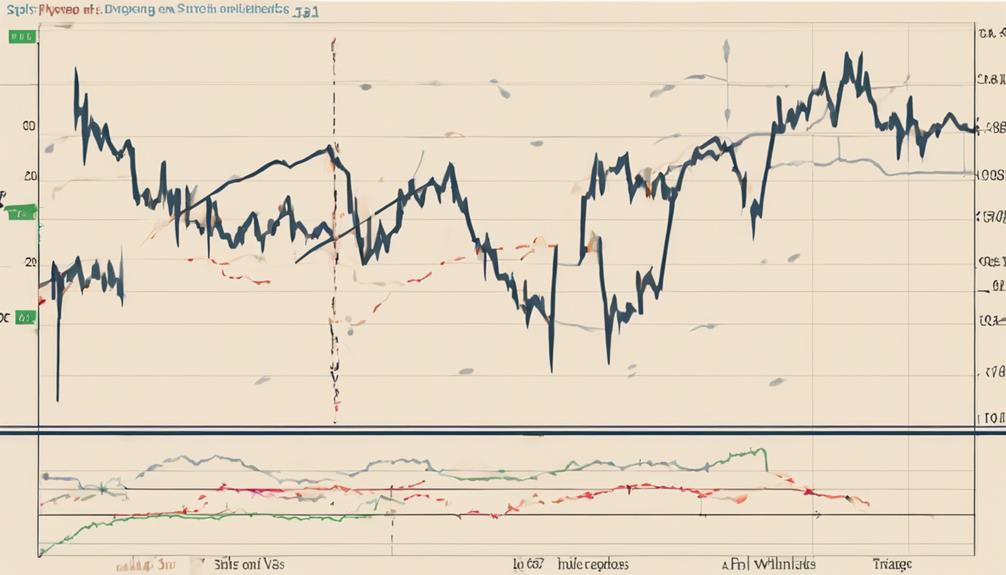
Divergence trading strategy with the Williams %R indicator focuses on spotting trend reversals by identifying discrepancies between price movements and %R readings.
This technique assists traders in pinpointing potential entry and exit points based on bullish or bearish divergences.
Spotting Trend Reversals
When analyzing market trends, identifying discrepancies between price movements and indicator signals can provide valuable insights into potential reversals. Divergence trading with Williams %R involves spotting these differences to anticipate trend changes.
Bullish divergence occurs when price forms lower lows while %R forms higher lows, indicating a potential bullish reversal. On the other hand, bearish divergence manifests when price makes higher highs while %R creates lower highs, suggesting a possible bearish reversal.
Entry and Exit Points
By integrating divergence signals from the Williams %R indicator with price action analysis, traders can strategically determine optimal entry and exit points in the market.
The Divergence trading strategy involves identifying inconsistencies between price movements and %R readings. When price makes lower lows while %R shows higher lows, it indicates a bullish divergence, signaling a potential upward price reversal.
Conversely, bearish divergences occur when price makes higher highs while %R forms lower highs, suggesting a possible downward price reversal. This strategy using Williams %R can help anticipate trend changes and assist in making well-informed trading decisions.
Combining divergence analysis with other technical indicators can further enhance the effectiveness of the Williams %R trading strategy.
Confirming Price Movements
Integrating divergence signals from the Williams %R indicator with price action analysis allows traders to confirm price movements effectively in the market.
Divergence trading with Williams %R involves spotting discrepancies between price and %R to anticipate trend reversals.
Look for bullish divergence when price forms lower lows while %R forms higher lows, signaling a potential upward price movement.
Bearish divergence occurs when price makes higher highs while %R makes lower highs, indicating a possible downward price trend.
Ride the Williams Strategy
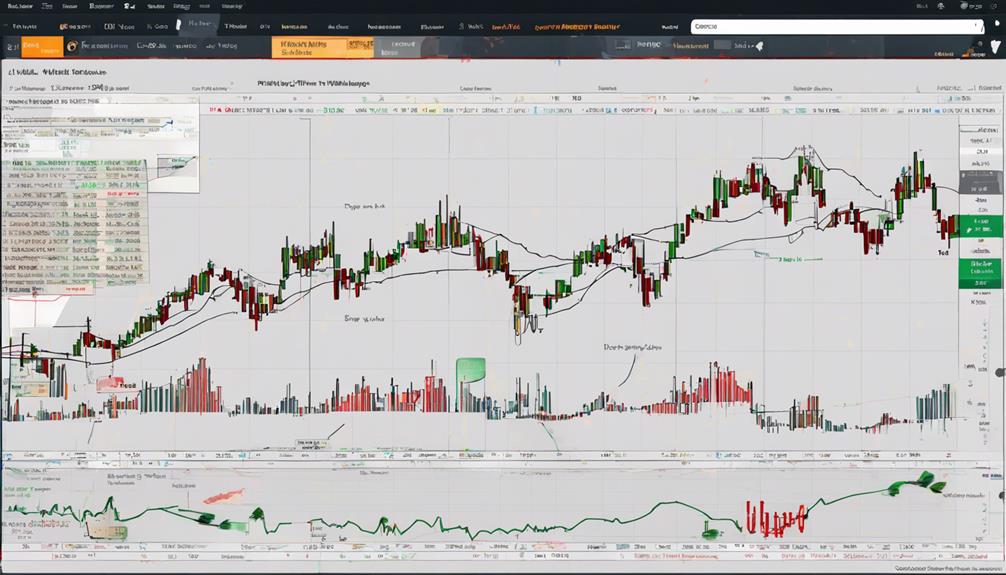
The Ride the Williams strategy focuses on entering and staying in a trend when Williams %R drops below -20 and remains under -30, targeting strong trends for potential profit.
By riding the trend while Williams %R stays below -30, traders aim to capture extended price movements systematically until a potential reversal is indicated when Williams %R rises above -20.
This strategy offers a structured approach to maximizing gains during sustained market momentum.
Strategy Explanation
Employing the Ride the Williams strategy involves strategically entering a trend by monitoring Williams %R for a break below -20 that is sustained below -30. This strategy aims to capture momentum and trend continuation opportunities rather than predicting reversals.
Key points to consider when implementing this strategy include:
- Waiting for Williams %R to break below -20 and not immediately rise above -30 can signal a strong trend continuation opportunity.
- Traders utilizing this strategy look for sustained readings below -20 for potential profitable trades.
- The emphasis is on using Williams %R to ride trends, enhancing trading accuracy through trend capturing techniques.
Implementation Tips
To maximize the effectiveness of the Ride the Williams strategy, traders should focus on precise timing of entries and exits based on sustained Williams %R movements. When the Williams Percent R indicator breaks below -20 and remains under -30, it indicates potential trade opportunities to ride strong downtrends.
By recognizing these overbought and oversold conditions, traders can strategically enter short positions to capitalize on trend momentum. Monitoring %R movements diligently is crucial for successful implementation of this strategy.
Traders must remain disciplined in adhering to the entry and exit criteria to make informed decisions based on the %R readings. Utilizing the Williams %R indicator effectively can help traders identify optimal entry points for trend-following trades.
Early Reversal Entries
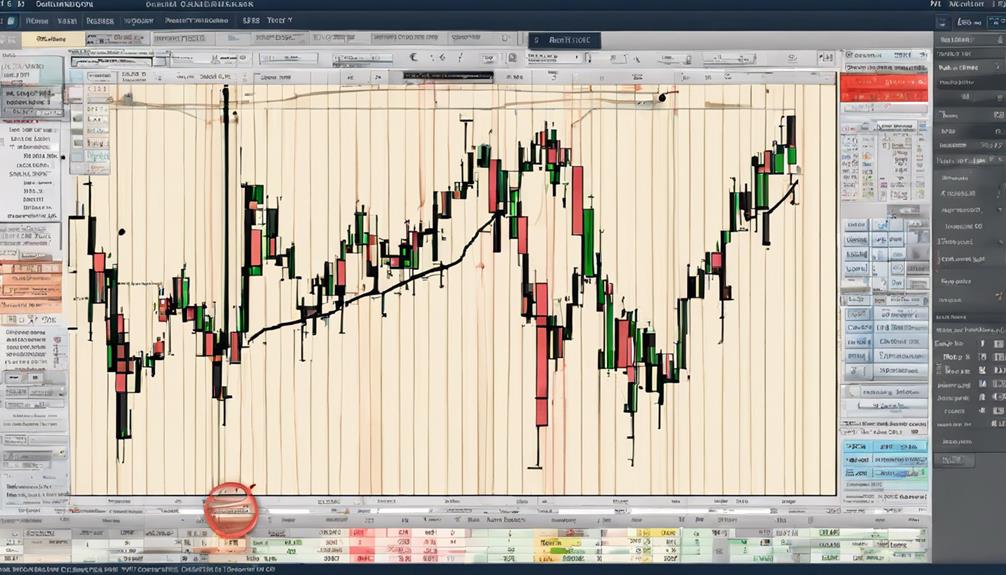
Utilizing Williams %R to identify overbought conditions above -20 is crucial for early entry in reversal trades to capture price movements at the beginning of a new trend. When focusing on early reversal entries with Williams %R, traders should pay close attention to specific indicators and behaviors to maximize the potential for successful trades:
- Spotting Potential Trend Changes: Williams %R can help traders spot potential trend changes before they fully develop, providing an opportunity to enter trades at the early stages of a new trend.
- Monitoring Williams %R Behavior: By monitoring Williams %R behavior near the -20 line, traders can look for early signals of price reversals, indicating a shift in market momentum.
- Capturing Price Movements: Early entry in reversal trades can significantly impact a trader's ability to capture price movements at the beginning of a new trend, potentially maximizing profits and minimizing risks associated with late entries.
Multiple Time Frame Analysis
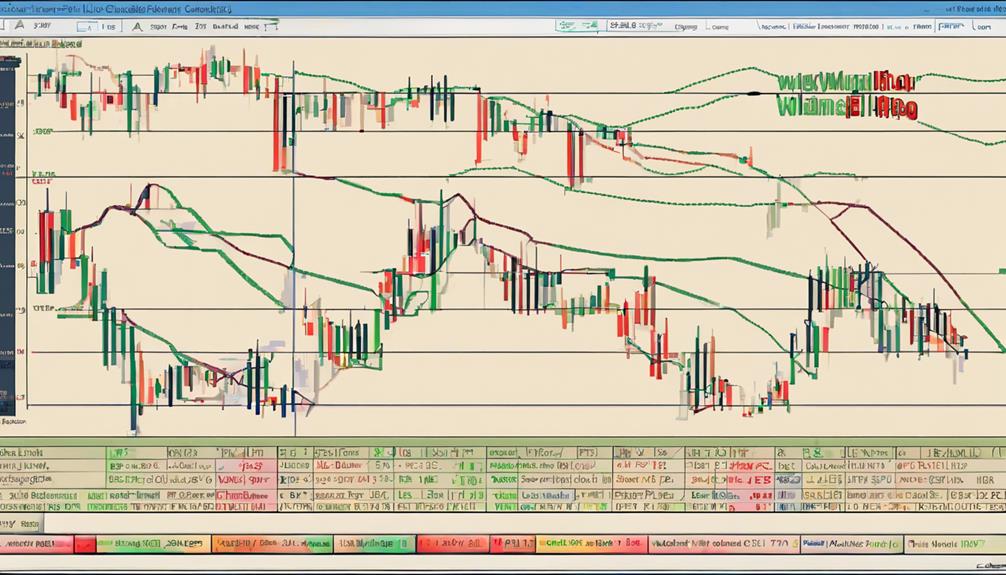
Multiple time frame analysis allows traders to assess market conditions from various perspectives, aiding in identifying potential trade setups.
By combining different time frames, traders can gain a more comprehensive view of price action and confirm signals generated by the Williams %R indicator.
This approach enhances decision-making by providing a holistic understanding of market trends and potential entry points.
Time Frame Selection
When conducting analysis with the Williams %R indicator, incorporating various time frames, such as daily, hourly, and 5-minute charts, plays a crucial role in enhancing trade decision-making and improving timing for potential reversals.
- Daily charts provide overall position insights
- Smaller time frames offer early entry signals for trades
- Identifying overbought conditions on the daily chart and executing a sell trade based on Williams %R downturn on smaller time frames can be a profitable strategy.
Utilizing smaller time frames for analysis can offer quicker and more precise entry points compared to relying solely on daily chart signals. Incorporating multiple time frames not only enhances decision-making but also aids in identifying optimal trade entry and exit points efficiently.
Signal Confirmation Techniques
Signal confirmation techniques through the analysis of multiple time frames play a pivotal role in validating trade signals generated by the Williams %R indicator. Traders utilize various time frames, such as daily, hourly, and 5-minute charts, to confirm signals and gain a comprehensive understanding of market conditions.
Smaller time frames can provide early insights into potential trend reversals or shifts in momentum, while daily charts help establish the overall trend direction. By combining these different time frames, traders can pinpoint precise entry and exit points based on Williams %R movements. This approach enhances the accuracy of trading decisions and enables traders to capitalize on timely opportunities in the market.
Incorporating multiple time frame analysis with the Williams %R indicator is a valuable strategy for successful trading.
Trend Following Approach
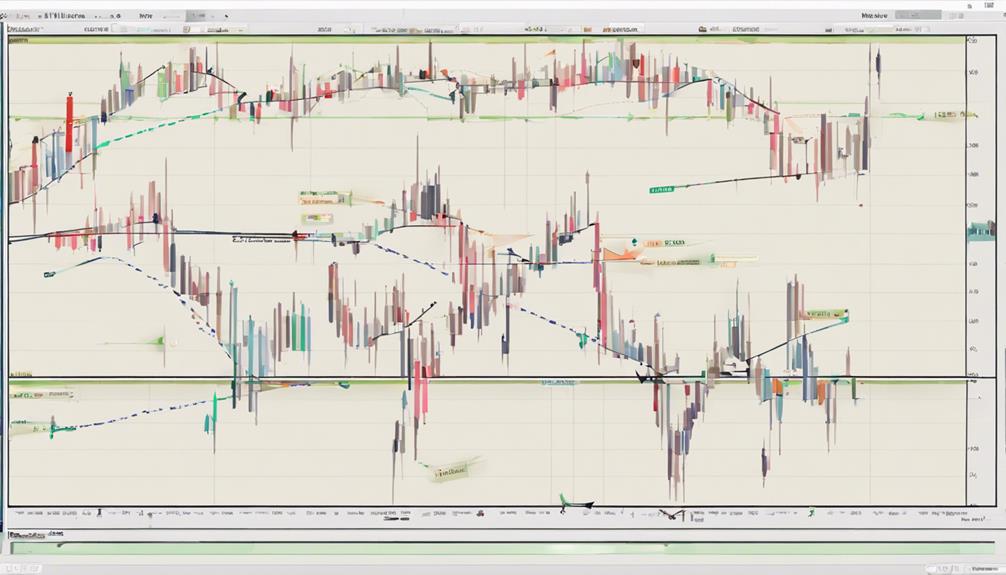
An effective trend following strategy utilizing the Williams %R indicator involves capitalizing on market trends by making trading decisions based on specific indicator signals. Traders employing this approach aim to align their positions with the prevailing market trend, leveraging the signals generated by Williams %R for optimal entry and exit points.
Key aspects of this strategy include:
- Directional Trading: Traders focus on entering positions in the direction of the market trend indicated by Williams %R.
- Signal Utilization: Buying is typically executed when Williams %R crosses above -80 in an uptrend, while selling occurs when it crosses below -20 during a downtrend.
- Trend Riding: The goal is to ride the trend for extended price movements, capturing profits as the market trend unfolds.
Counter-Trend Trading
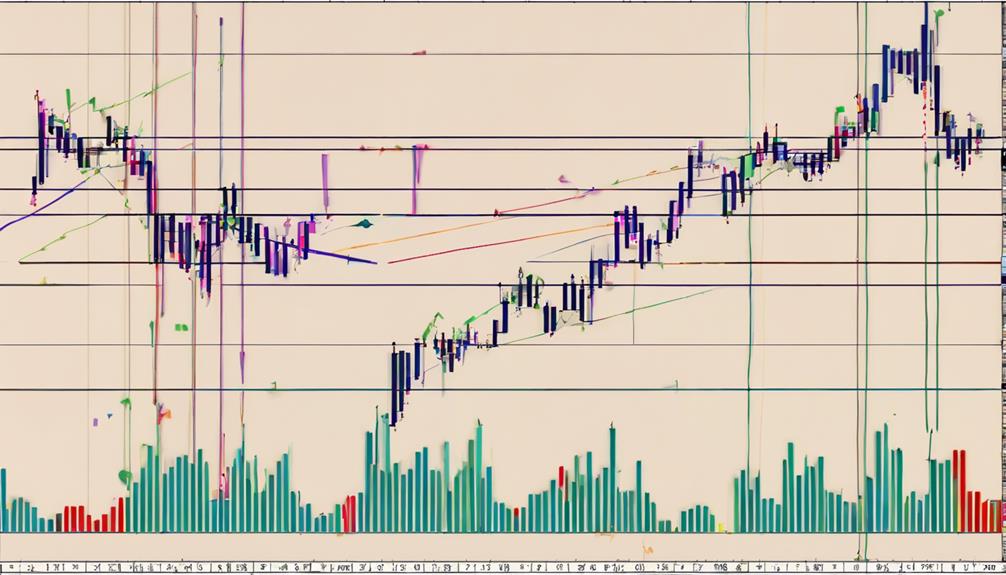
Counter-trend trading utilizing the Williams %R indicator involves identifying potential reversals against the prevailing market trend by targeting extreme readings to anticipate trend shifts. Traders employing this strategy observe overbought or oversold conditions signaled by extreme Williams %R levels, such as -80 or -20, to capture short-term price movements contrary to the main trend.
Waiting for the indicator to hit these extreme levels before considering counter-trend positions can enhance trading accuracy. Additionally, combining Williams %R with other technical indicators can provide further validation for counter-trend signals, leading to more effective trading decisions.
Volatility Breakout Strategy
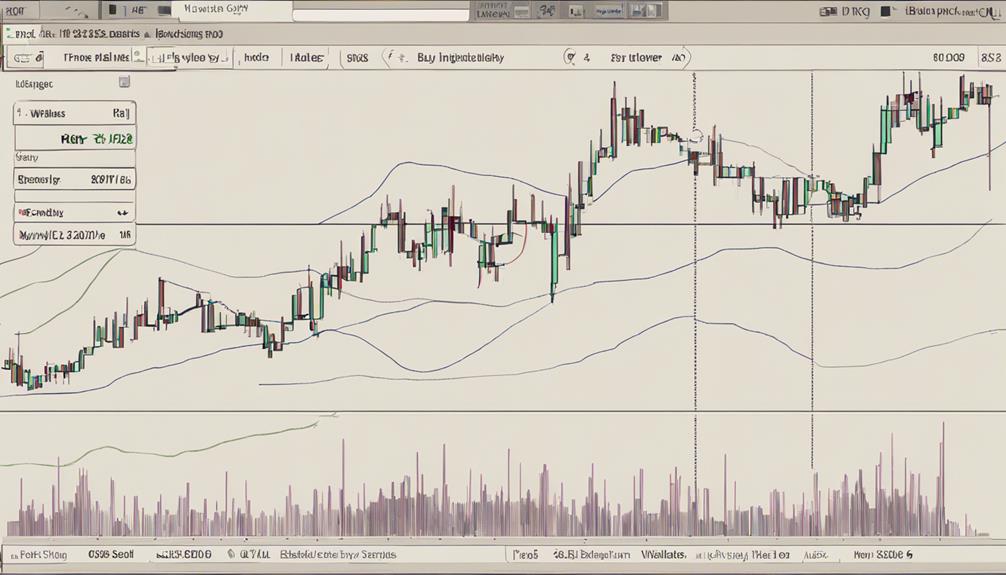
Implementing the Volatility Breakout Strategy with the Williams %R indicator involves strategically identifying periods of heightened market volatility to discern potential bullish momentum. Traders utilizing this strategy focus on breakouts above the -20 level in Williams %R as a signal for potential upward price movements following high volatility periods.
To effectively implement the Volatility Breakout Strategy, traders should consider the following:
- Utilize historical volatility data to identify periods of high volatility for optimal entry points.
- Combine Williams %R with other technical indicators to confirm breakout signals and strengthen trading decisions.
- Implement proper risk management techniques to mitigate potential losses during volatile market conditions.
Swing Trading With Williams %R
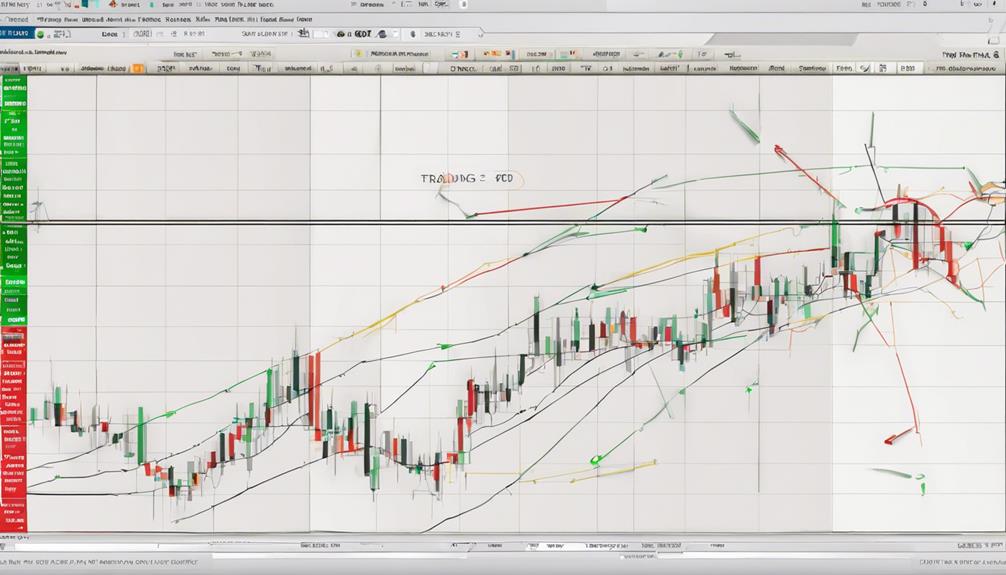
Swing trading with the Williams %R indicator involves strategically identifying optimal entry and exit points based on overbought and oversold conditions for short to medium-term trades. Traders typically view %R readings below -80 as potential buying opportunities and those above -20 as selling opportunities.
By utilizing Williams %R, traders can capture price swings in trending markets due to its momentum and volatility signals. However, it is essential to combine %R with other technical analysis tools to enhance swing trading strategies and improve trade timing.
Effective implementation of swing trading with Williams %R necessitates a deep understanding of market context, diligent risk management, and consistent application of the indicator. By mastering the art of interpreting overbought and oversold conditions with Williams %R, traders can potentially increase their profitability in the dynamic world of swing trading.
Combining Williams %R With Moving Averages
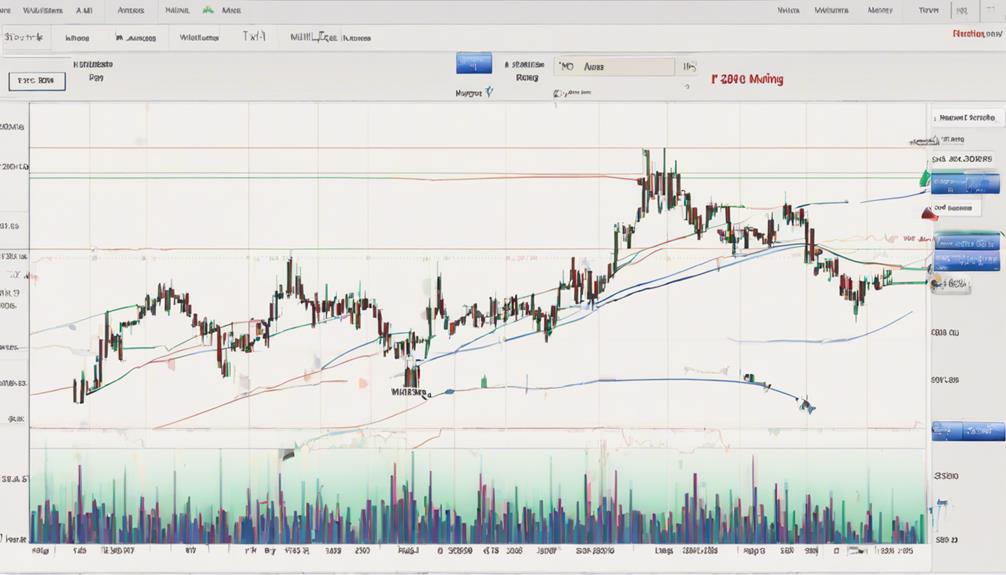
The integration of Williams %R with moving averages presents traders with an opportunity to enhance trading signals through confirmation mechanisms. By combining these two technical indicators, traders can make more informed decisions based on the intersection of signals. Here are key points to consider when combining Williams %R with moving averages:
- Utilize a 100-period moving average alongside Williams %R to generate effective buy or sell signals.
- Short signals are triggered when the price closes below the 100 DMA and Williams %R falls below the 50 line.
- Exit short trades when Williams %R closes above the 50 line and the price rises above the 100 DMA.
This strategic approach provides a structured method for traders to analyze market movements and make well-informed trading decisions. By incorporating moving averages with Williams %R, traders can potentially increase the accuracy of their trading signals and improve overall trading performance.
What are the Best Trading Strategies Using the Williams %R Indicator?
When it comes to achieving trading success with Williams %R, there are a few key strategies to consider. One approach is to use overbought and oversold levels as a signal to enter or exit a trade. Another effective strategy is to look for divergence between price and the Williams %R indicator to anticipate potential reversals.
Frequently Asked Questions
How Do You Use Williams %R Indicator?
The Williams %R indicator helps traders gauge overbought and oversold conditions. By evaluating the relationship between the highest high, lowest low, and current closing price, it aids in identifying potential momentum shifts and trend strength in securities.
What Is the Williams Trading Strategy?
The Williams trading strategy leverages the Williams %R indicator to pinpoint market conditions of overextension. By buying below -80 and selling above -20, it aims to capture potential price reversals, enhancing trading decisions with precise entry and exit signals.
Is RSI Better Than Williams R?
When comparing RSI and Williams %R, the choice depends on the trader's focus. RSI is favored for trend confirmation and divergence analysis, whereas Williams %R excels in identifying reversals and extreme price levels. Each serves distinct trading purposes effectively.
What Indicator Do Most Traders Use?
Traders commonly utilize technical indicators to navigate the market. Among these tools, the Williams %R indicator stands out for its ability to gauge overbought and oversold conditions. Its widespread adoption underscores its importance in trading decisions.
Conclusion
In conclusion, the top 10 trading strategies using the Williams %R indicator provide traders with a powerful toolkit for navigating the markets.
By incorporating these strategies into their trading approach, investors can optimize their decision-making process and increase their chances of success.
Remember, precision in practice produces profitable outcomes.
